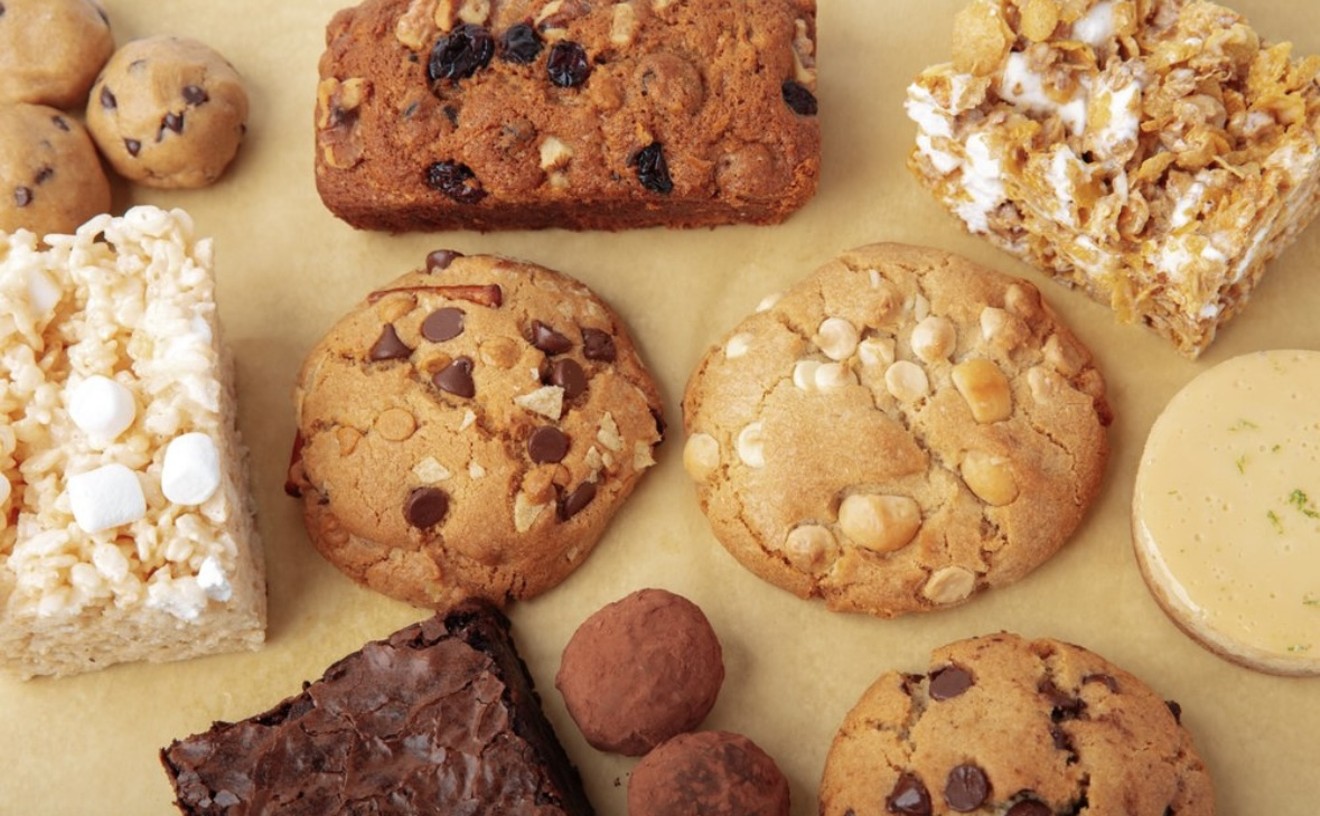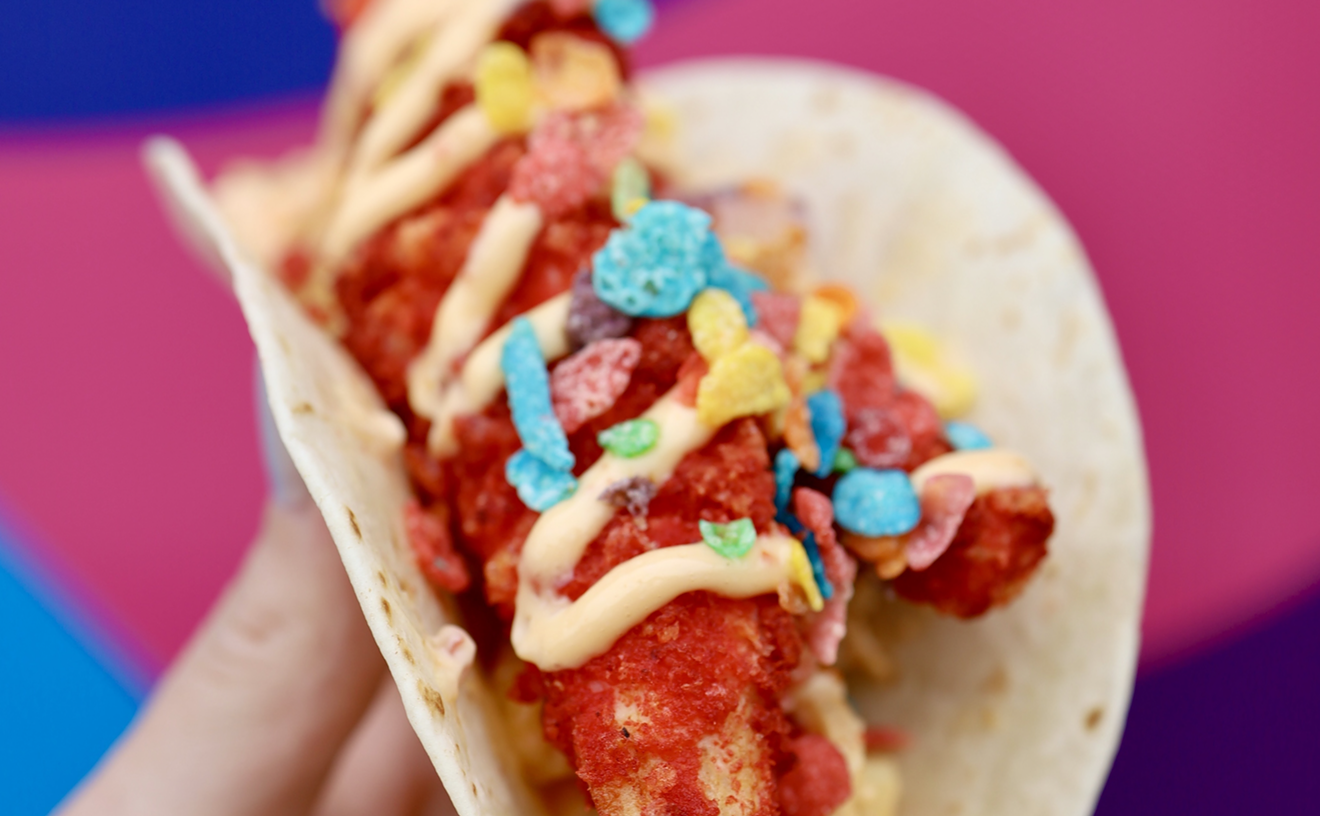There are some interesting and unusual wines on Cacao's list of about eleven dozen choices, but none are Venezuelan. This, according to the maitre d' I asked on one visit, is because Bodegas Pomar doesn't yet have a distributor here, so partner Cacao can't get its wines. Duh? Well, never mind; the meaning of partnership must be beyond the comprehension of mere foodies like myself.
As for the chocolate boutique, featuring house-crafted candies and pastries, that was supposed to open adjacent to the restaurant in January (Cacao itself opened in mid-October), it did not, and the maitre d' could offer no explanation as to why or when it might open, if ever. Oof. Now that hurts, because El Rey only produces about the world's most mind-blowing chocolate -- intensely fruity, spicy, complex single bean-origin stuff; most manufacturers today make blended chocolate based on the easy-to-grow but bitterly acidic forastero. Fortunately Cacao's desserts, and even a few savory dishes, use El Rey's remarkable product, so the chocolate shop's loss is not a total loss.
The dishes that Cacao offers look as elegant as the room itself. Décor is sleekly modern, with inlaid granite/marble floors, warm wood panels inlaid into metallic silvery walls, stylish ivory fabric "columns" running down the space's center from floor to ceiling, and muted lighting (but not so muted that you need a flashlight to find your food) from spidery polished-chrome chandeliers and electric faux "candles." Equally tasteful muted music, conducive to conversation, makes Cacao an impressive room for a business lunch (and, at only $7.50 to $9.50 per lunch entrée -- about one-third the price of dinner, with a simple dessert thrown in to boot -- lunching here is good business sense in itself). Plates are composed with an almost Japanese visual aesthetic -- salads shaped into precisely molded circles, and so on.
As for how the food tastes ... well, that gets a bit more complicated. The chef's style would be best described as a very personal Big and Bold-flavored Nuevo Pan-Latin: complexly spiced, innovative interpretations of dishes originating in many south-of-the-border nations, most notably Peru, but also Argentina (a rolled stuffed matambre steak), Chile (Chilean-style leg of lamb), Mexico (a salad with cardos cactus), and Leal's native Venezuela (an updated take on traditional reina pepiada, chicken/avocado salad with arepa chips).
Also surfacing here and there are influences from several short training stints Leal spent in the kitchens of modern masters like Ferrán Adria, the foam fellow who's been all over Miami's media since La Broche opened here last year; several of Cacao's otherwise substantial soups (one featuring pork confit, another a traditional-tasting cilantro-spiked Peruvian chicken and rice aguadito) came sporting airy heads of sweet, syphon-frothed yellow potato. If that sounds like an awful lot of elements involved, that was what I, as well as my dining companions, thought was the problem with the food's flavor. Admittedly this "problem" is based on personal taste. For diners into the concept of a myriad of spices, plus severely reduced/concentrated flavors, being used in virtually every dish -- to the point that the natural flavors of the dish's individual ingredients are obliterated -- there is no problem.
Typical of both Cacao's pluses and probs was a duck and tortilla salad. The "tortilla" was in fact a flaky folded pastry shell stuffed with lightly dressed mesclun and slivers of pickled duck, this clever take on a taco balanced in a mound of mild, velvety-smooth guacamole and surrounded by drizzles of very subtly sweet mango sauce. The duck was, however, so pickled that it overpowered everything else on the plate. On a previous visit my dining companions and I had found the same true of a spicy duck escabeche, lovely looking but so sour that accompanying salty sautéed vegetables and a white chocolate carrot mousse that had sounded especially intriguing didn't stand a chance. Like ceviches and tiraditos, escabeches traditionally were long-brined (in Peruvian red wine vinegar instead of citrus) to preserve foods; now that most kitchens including, I bet, Cacao's, contain them new-fangled fridges, most modernized versions of these dishes tend toward lighter last-minute marination -- rather than, if my taste buds were telling me true, even stronger pickling in a solution containing key lime juice as well as vinegar. For vegetarians into overpickling, mushroom and artichoke ceviche featured super-sour shiitakes and artichoke hearts.
Black tamal with shrimp -- very few, and very small shellfish -- was dramatically colored, as were our tongues and teeth after eating the squid ink-stained item. Too bad that the ink turned the cornmeal filling not just black but slimy.
Causa de camarones was constructed Napoleon-style with the crayfish filling in the middle of layers of smashed yellow potatoes, like the Lima version. But the crayfish turned out to be just a sort of shellfish stuffing, and the layer was sparse. Which was just as well. The stuff was powerfully fishy.
Most successful starter was watermelon and goat cheese puff pastry. One wouldn't imagine watermelon gutsy enough to balance goat cheese, but here it did, and the pastry shell was beautifully rich.
That an entrée of strip steak on the lunch menu turned out to be less expensive skirt steak was a blessing in disguise, as only the most flavorfully gamy of beef cuts could have stood up against almost-too-salty reduced wine sauce flavored with rosemary and nutmeg, plus chopped, toasted wild Brazil nuts. The steak was sautéed perfectly rare, as ordered. Accompanying roasted potatoes, interspersed with dwarf-diced squares of carrots and celery, also stretched the salt border but was a welcome change from today's usual universal side of bland steamed summer squashes.
Gouda cheese stuffed with diced pork sounds offbeat enough to be a cutting-edge creation, but it's actually an old-time holiday dish that drifted a few miles across the Atlantic to Venezuela from the Dutch Antilles islands of Curaçao, Bonaire, and Aruba. A whole Holland cheese is hollowed out, stuffed with a spiced pork stew, and baked till the ball flattens into a neater approximation of Salvador Dali's melted watches. Sadly, Cacao's version was oversalted. Otherwise it was satisfying in a hearty, peasanty, back-to-basics sort of way, and, probably needless to say, quite filling.
It goes without saying that Cacao's not a place to skip dessert, though two that we tried (Gran Saman chocolate mousse dome with fresh passion fruit mousse, and a dark chocolate tuile filled with milk chocolate mousse) were mixed successes, due to the pronounced graininess of both chocolate mousses. Still the earthy caramel notes characteristic of El Rey's 41 percent "dark milk" chocolate came through nicely in the lighter mousse, and the passion fruit mousse was refreshingly tart. And Icoa pearls and rubies (a smoothly rich, full-flavored white chocolate dome filled with three berry mousses) was as terrific to taste as it was to look at.










